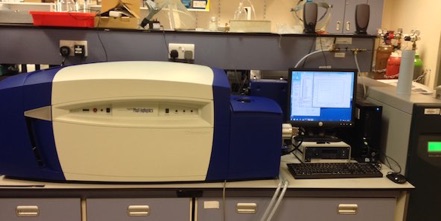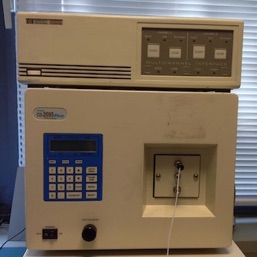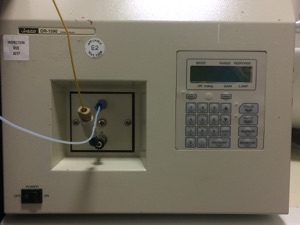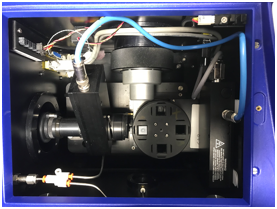Chirality @ Bath Chemistry

Circular Dichroism (CD) spectroscopy allows the determination of chirality in solution or solid state. A chiral molecule absorbs preferentially either the right or the left-handed, the difference giving raise to the CD spectrum. This technique is extensively used to study protein and DNA folding, supramolecular interaction and the behaviour of chiral molecules in various conditions.
Optical rotatory dispersion (ORD) spectroscopy measures the difference in the rotation of linearly polarised light due to a difference in the refractive index of circularly polarised light. In other words ORD measures the variation in optical rotation with change in wavelength. This technique can be used for example to measure the absolute configuration of metal complexes and other chiral species.
Linear dichroism (LD) spectroscopy measures the difference between the the absorption of polarised light travelling parallel and perpendicular to an orientation axis. It is mainly used for the study of macromolecules that have certain ordering in solution or in the solid state.
Circularly Polarised Luminescence (CPL) allows the study of the excited states of chiral molecules. It provides unique information about the geometry of the excited states, information which is complementary to that acquired using CD spectroscopy.
Here are some Nature Protocols papers that highlight the use of CD spectroscopy for determining protein structure, binding interactions, folding etc.:
Analysis of the kinetics of folding of proteins and peptides using circular dichroism
Using circular dichroism spectra to estimate protein secondary structure
We currently have two spectrometers capable of measuring chirality in solution or thin films: an Applied Photophysics Chirascan and a Jasco J-810. If you're interested in using either of these instruments contact GDP

Chirascan specifications:

range: <170 nm to 1200 nm
Dual polarising, dual dispersing monochromator
Peltier controlled 4-cell auto changer (QNW),
temperature range: -20 to 110 °C, rectangular cells, 10mm width. max
0.1 nm wavelength resolution throughout the spectral range
Detection modes: CD, Absorbance, LD, ORD, fluorescence, fluorescence detected CD (FDCD), temperature, detector HV & DC voltage
Automatic titration accessory using a Hamilton MicroLab 500 dual syringe dilutor/dispenser
Can accommodate circular cells in a single Peltier controlled cell holder
Circularly Polarised Luminescence (CPL) accessory:
Software controlled dedicated SEM, range: 205 nm to 900 nm
link to the Chirascan booking sheet

Jasco J-810 specifications:

N2-cooled 150W Xe arc lamp
range: <190 nm to 1100 nm
Peltier controlled single cell holder, temperature range: -5 to 110 °C, rectangular cells, 10mm width. max
0.1 nm wavelength resolution throughout the spectral range
Detection modes: CD, Absorbance, temperature, detector HV
Can accommodate 100mm rectangular cells & pellet accessory for measurement of CD though thin solid samples
A Specac variable temperature cell holder and controller are available for conducting experiments between -190 to 250°C for solid samples and -70 to 250 °C for liquid samples. The Specac holder/controller can be used in both Jasco J-810 and Chirascan spectrophotometers.
link to the Jasco booking sheet

Jasco CD-2095 plus

Specifications:
150W Hg-Xe arc lamp
range: 220 - 420 nm
20 nm bandwidth; ± 3 nm wavelength accuracy
CD output: 0.5 to 1280 mdeg
25 mm flow cell (44 ul), 30 bar max. pressure
can record whole spectrum (220-420nm) in non-automatic mode
Currently controlled by Chemstation via an Agilent 35900 A/D converter. Can be used with a wide range of HPLC equipment via A/D converters. If you're interested in using the CD-2095 Plus detector contact GDP.

Jasco OR-1090

Specifications:
150W Hg-Xe arc lamp
range: 350 - 900 nm
angular range: ± 500 mdeg
25 mm flow cell (44 ul), 30 bar max. pressure
It is currently attached to a Perkin Elmer 200 Series HPLC controlled by TotalChrom 6.3.1. It can also be used with a DATAQ DI-149 A/D acquisition interface or other A/D converters. If you're interested in using the OR-1090 Plus detector contact GDP.
Last modified: 13 Sep 2023
